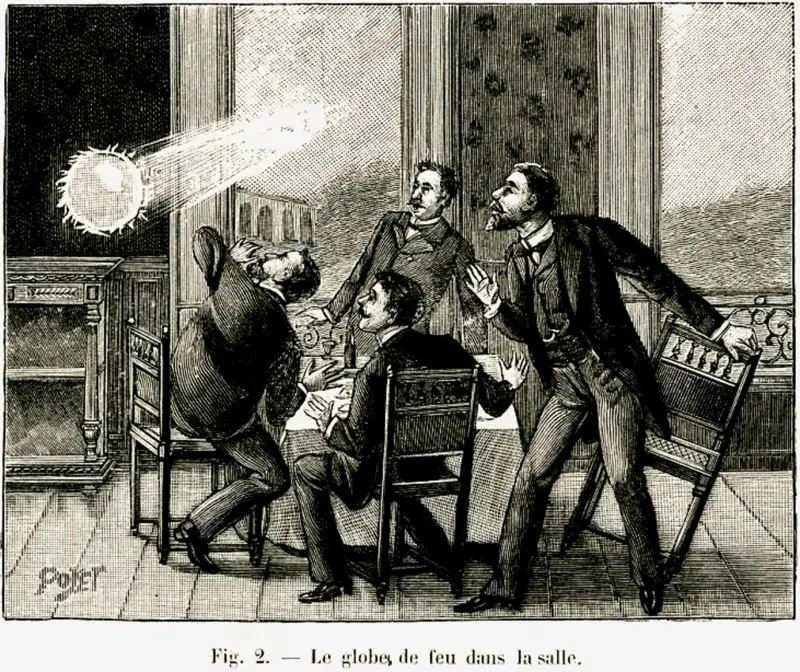
Table of contents:
- Author Bailey Albertson [email protected].
- Public 2023-12-17 12:53.
- Last modified 2025-01-23 12:41.
How to sew a hidden zipper - technology, tips, subtleties

A hidden zipper is indispensable when you need a closure invisible from the front side for a dress, skirt, bag. It is not so easy to insert it correctly without deforming the product. What do you need to know to sew in a hidden zipper?
Features of a hidden zipper
The features of a hidden zipper are that it hides in the seam of the product, and only the slider remains on the surface. In the usual one, it is located on the side of the teeth, in the secret, on the back. But do not confuse, some ordinary zippers also have teeth hidden under the braid. You can distinguish it this way: it is easy to bend the teeth of a secret zipper when opened, but not in other species.

The difference between a hidden zipper - the teeth are from the inside out
How to choose the right invisible zipper? Pay attention to the width, type and density of the base material. The lighter the fabric of the product, the thinner the zipper is chosen. The length should be 2-3 cm longer than the planned length of the fastener.
Countersunk sewing foot
For attaching a hidden zipper, a special foot is used, which allows it to be stitched as close to the teeth as possible. It does not always come with a sewing machine, but it is sold in specialized stores. It differs from the usual in the shape of the sole: on the surface of the product there are grooves or grooves for a zipper spiral.
To find the right foot, take any one that fits your sewing machine with you to the store. Feet of different models have design features:
- on the "leg";
- with a removable sole;
- with screw fixing.
They can also be metal or plastic. Metal models will last longer. Plastic is a less durable material. Over time, such a foot is deformed by the needle or the teeth of the machine bar, and its sliding deteriorates. But if the foot is needed for one-time work, then a plastic product will do.

There are two types of feet for hidden zippers - plastic and metal
What you need to work
To sew on a zipper, you will need:
- zipper;
- crayon
- ruler;
- tailor's pins;
- needle and thread;
- "Secret" foot.
Before starting work, check the tension of the upper and lower threads in the machine. If it is strong, then loosen it, otherwise the zipper will bulge after grinding.
Non-woven strips
Sewing on the zipper so as not to stretch the fabric is easy. It is necessary to glue the seam allowances at the place where the zipper is sewn in using non-woven strips. For this purpose are intended:
- formband - an oblique non-woven tape with a central stitch, which is used on oblique cuts or for knitwear and glued so that the central line coincides with the seam markings;
- kontenband - a non-woven glue strip, cut in a straight line, which is glued with an overlap of 1 mm beyond the seam marking.
If there is no formband or contenband, the strips are cut from non-woven fabric: for oblique cuts and knitted fabric along the bias, for straight ones - in a straight line.

Formband - bias tape with center buttonhole stitch
How to properly sew a hidden zipper
To sew in a hidden zipper, perform a number of sequential steps.
The first stage is preparation
- Measure 1.5 cm from the inside of the fabric and draw a line with chalk on both sides.
- Glue non-woven strips - formband or contenband to the allowances in the place of stitching. If the fabric is rough and dense, you can do without non-woven fabric.
- Baste the seam along the markings.
- Overcast the cuts with an overlock or hand.
- Iron the seam. In this case, first press the seam on one side, and then press on different sides.
Stage two - basting
- Attach a closed zipper in the center to the stitching place, make chalk marks on the seam allowances and the zipper tape symmetrically on both sides in two or three places. They will be needed to more accurately sew the zipper. The top of the closure should line up with the top seam mark for the waistband for the skirt or for the neckline if it's a dress.
- Insert the pins at the marks across the fastener and fasten the zipper with seam allowances under the teeth.
- Baste the zipper over the seam allowances, piercing only one layer of fabric.
- Remove the pins, remove the seam mark, open the zipper.

We apply the markup symmetrically to both parts
Stage three - stitching
- Attach the zipper on the machine using the special foot until it rests against the fastener. If there is no special foot, use the usual one. Then you need to manually bend the zipper spiral and make sure that the seam goes as close to the spiral as possible, but does not damage it. If there is little experience, then it is better to attach both sides from above in order to avoid skewing.
- Zip up and make sure everything is done correctly.
- Continue the side seam so that the bottom bartack is not visible. It should be 0.5-0.7 cm below the end of the seam.
- Remove the basting.

A secret zipper is sewn in with a special foot
How to sew in a hidden zipper - video
Features of stitching in hidden zippers
There are some nuances depending on the specific product, fabric, cut and stitching location. The different options for sewing in a zipper are described below.
Bag, pillowcase
The easiest option is to sew a zipper into a bag or pillowcase - to sew a zipper to the cut but not sewn parts, then assemble the product. The zipper should be 5 cm longer than the zipper. Instead of rinsing, a fabric glue stick is also used.
- We apply the markings on the front side of the product.
- We coat the allowance with glue.
- We apply the open zipper with the slider down, aligning the spiral with the marking line and press it with a hot iron.
To avoid staining the ironing surface, place paper under the part. After that, it remains only to attach a zipper on a typewriter and assemble the product.
Skirt-sun without a seam
- The first step is to outline where the zipper will be sewn in.
- We carefully cut the fabric to the length of the fastener, adding 5-7 cm.
- Duplicate (glue) the sections with a suitable non-woven tape, overlay the sections.
- Sewing in a zipper.
- Close the remainder of the incision with a seam.
Dress
If the fastener in the dress starts below the neckline or armhole, the seam is sewn before the opening of the fastener. We carefully combine the details along the waistline, especially in cut-off dresses.
How to sew a zipper into the side seam of a dress, cut-off at the waist - video
Sewing a hidden zipper into any product is not so difficult if you know some tricks and secrets. Guided by the described recommendations, everyone can easily do this.
Recommended:
How To Sew Roman Shades With Your Own Hands - A Master Class With Photos, Videos And Step-by-step Instructions

Features of Roman blinds, rules for the selection of suitable fabrics. A detailed description of sewing Roman shades with diagrams
How To Replace Baking Powder For Dough In Baking: Slaked Soda And Other Options For Cake, Biscuit And Other Products + Photos And Videos

How to make lush baking can be done without baking powder at home. What to replace. Useful Tips
How To Ignite A Cast Iron Pan Before The First Use And In Other Cases: Salt, Oil And Other Methods + Photos And Videos

How to ignite cast iron pans. Quick ways to get rid of engine oil residues, rust and carbon deposits
How To Sew A Pillow For Pregnant Women With Your Own Hands: Master Classes And Step-by-step Instructions With Photos And Videos

Pillows for pregnant women of different shapes. A step-by-step description of how to sew such pillows with your own hands: patterns, materials, photos and videos
What Does Ball Lightning Look Like And Can It Fly Into The House, What To Do In This Case, Photos And Videos

Ball lightning - what it is and what it looks like. Can ball lightning fly into the house. What to do if it happened
